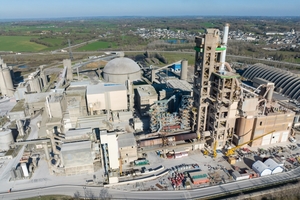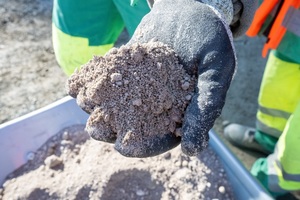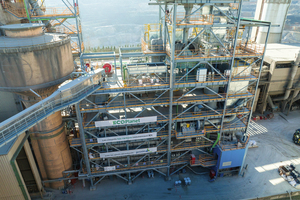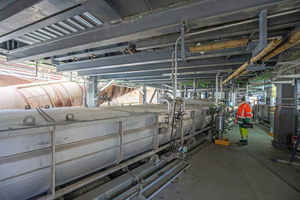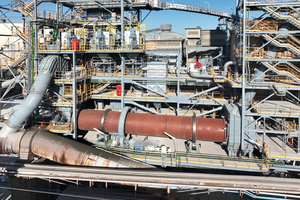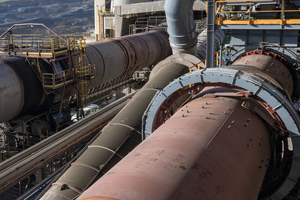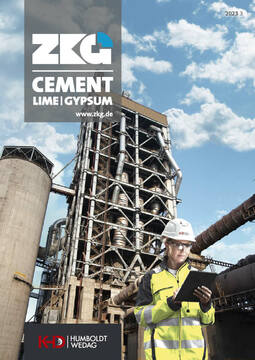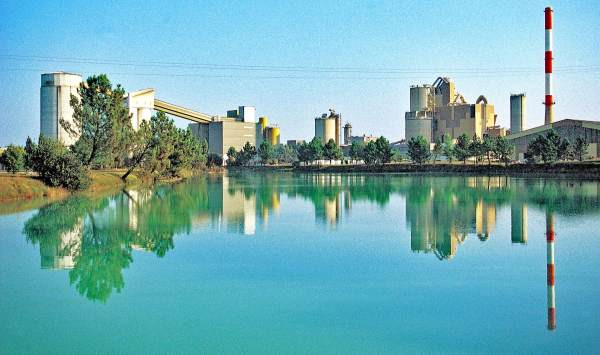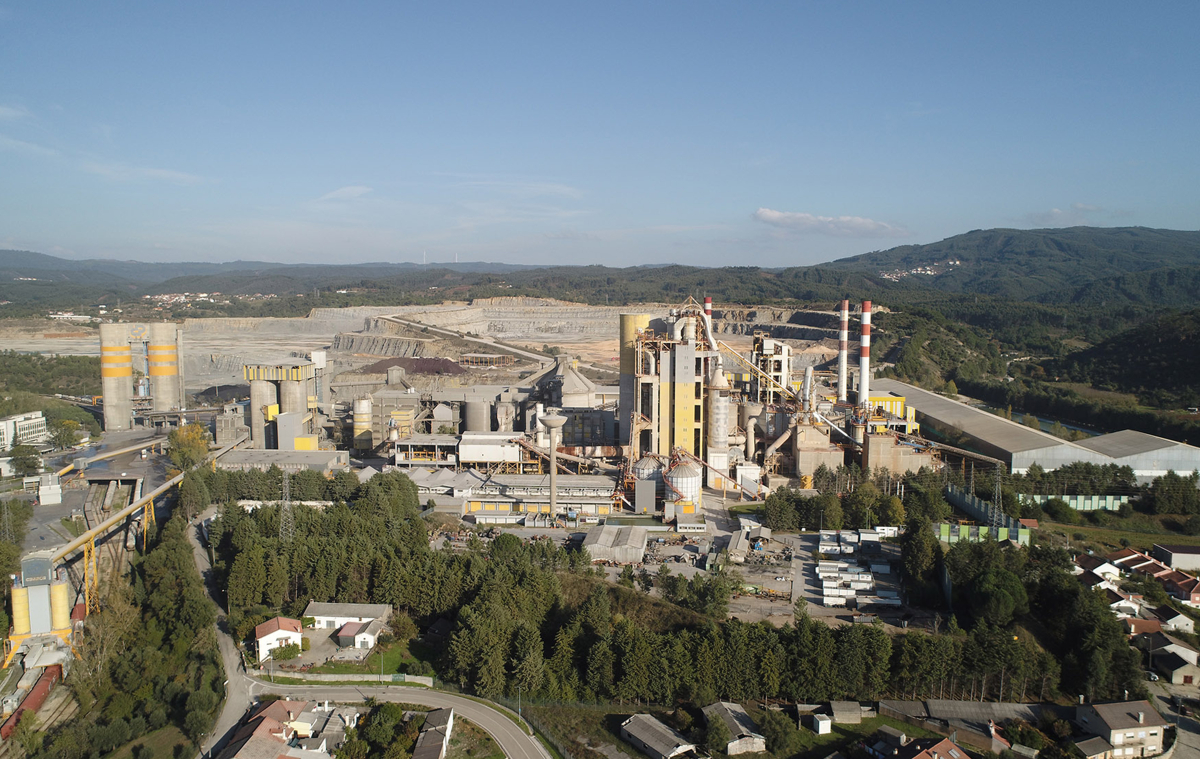Commissioning of one of the first production lines in Europe dedicated to calcined clay
The commission of this production line for calcined clay is part of Holcim’s European roadmap to decarbonize construction with a broad range of low-emission materials, from calcined clay to construction and demolition waste. It received financial support from the French government, as part of the “France Relance” scheme investing in large-scale decarbonization and energy efficiency initiatives in France.
At Saint-Pierre-La-Cour in Mayenne/France, the Lafarge plant’s new firing line came into service at the beginning of February. The result of a € 40 million investment financed by the Holcim Group and winner of France Relance funding, this large-scale production facility is equipped with Holcim proximA Tech technology.
The addition of proximA TechZero produced in Saint-Pierre-La-Cour, by supplementing the clinker in the constitution of the new ECOPlanet cements (CEM II/C and CEM IV), contributes to reducing their carbon footprint by half compared to a traditional Portland cement CEM I.
A low carbon industrial process and product
Most of the CO2 associated with cement comes from its manufacture. Traditionally, the clinker burning at 1400 °C is very CO2 intensive and the decarbonation of the limestone at this temperature to obtain clinker also contributes to CO2 emissions. 40% of the total emissions are linked to the heating of the kiln and 60% to the natural reaction of decarbonation of the limestone during the firing process.
The proximA Tech, on the other hand, is obtained with a much lower firing temperature, around 800 °C, and emits very little CO2 unlike limestone.
The Saint-Pierre-la-Cour facility is now going even further thanks to an unprecedented industrial process that emits virtually no carbon, thanks to the reuse of waste heat and the exclusive use of alternative non-fossil fuels, mainly biomass from local circular economy loops.
An abundant and local resource
This decisive step in the manufacture of low-carbon cements is made possible by a new technology developed by the teams at Lafarge France and the Holcim Innovation Center located near Lyon. This patented technology, called proximA Tech, enables the transformation of a locally abundant resource, kaolin clay, into a low-carbon addition for cement production. When production conditions are optimised, as in Saint-Pierre-la-Cour, carbon emissions are close to zero, offering a very low-carbon addition: proximA TechZero.
The production of calcined clay at Saint-Pierre-la-Cour, combined with that of the La Malle plant in the Bouches-du-Rhône region, where the existing installation has also undergone major investment, will enable Lafarge France to produce more than 2000000 t of “proximA inside” cement by 2024.
This innovation contributes to accelerating the ecological transition of the construction sector by meeting the growing demand of the French market for low-carbon cements.
A response to the low-carbon demand of the Parisian metropolis
The ECOPlanet cements produced in Saint-Pierre-la-Cour will primarily supply the construction market on the country’s west coast as well as Paris and the Ile-de-France region.
At the forefront of ecological construction solutions, Lafarge France launched ECOPlanet in 2021, one of the world’s first ranges of cements with a carbon footprint ranging from -30% to -90% of CO2 emissions compared to a standard Portland CEM I cement. By 2026, ECOPlanet will represent 30% of Lafarge France’s total cement production.
“By massively industrializing this new component of ECOPlanet low-carbon cements, Lafarge France and the Holcim Group are pursuing their commitment to move the construction sector towards less carbon-intensive, more responsible and sustainable building methods. To meet our customers’ environmental challenges, we are reinventing cement by using locally abundant resources with a low carbon footprint,” explains François Petry, CEO of Lafarge France.

